2020 Kuranda soybean on sandy loam – Home Hill
Grower: Richard Wall, Glendalough Farming.
Richard's farming system is fully GPS-guided with every tractor pass running on a 5 ft system to suit a wide tractor and a spray tricycle tractor on 10 ft centres. Richard chose this configuration after trialling 5 ft single, 6 ft single and 6 ft dual spacings 15 years ago and the 5 ft single system out-yielded the other two for 4 years straight.
He has been growing soys as a fallow crop for over 15 years. First 10 years was a green manure crop but for the last five year he has been growing soys for grain. He tried mungbeans for a couple of years but found it difficult to harvest quality seed. A shower of rain at the wrong time always won the battle and downgraded the quality. Richard finds soys are the best option during summer to withstand the rain, floods and growing conditions.
He has followed a 6-month fallow until now and is moving to an 18 month fallow this year.The farm is fully irrigated and Richard does all the farming operations himself, except for harvesting. Over the years he has grown soys, mungs, corn, navy beans and cow peas in rotation with sugarcane.
Location: Up River, Home Hill
Area: 3 blocks totalling 22 hectares. Mainly sandy loam. Previous crop was sugarcane on all three blocks.
Pre-planting preparation
- Disced the old stools twice, contract rotary hoed, lasered the ends and disced once more.
- Pre-fertilised with 195 kg/ha of Vegie Special then bedformed over the top.
- Pre-irrigated then planted 5 to 7 days later into moisture followed immediately with herbicide (Round Up and Valor) application. The Valor was not as effective as it should have been.
- Delays in obtaining seed meant plating was a few days later than hoped.
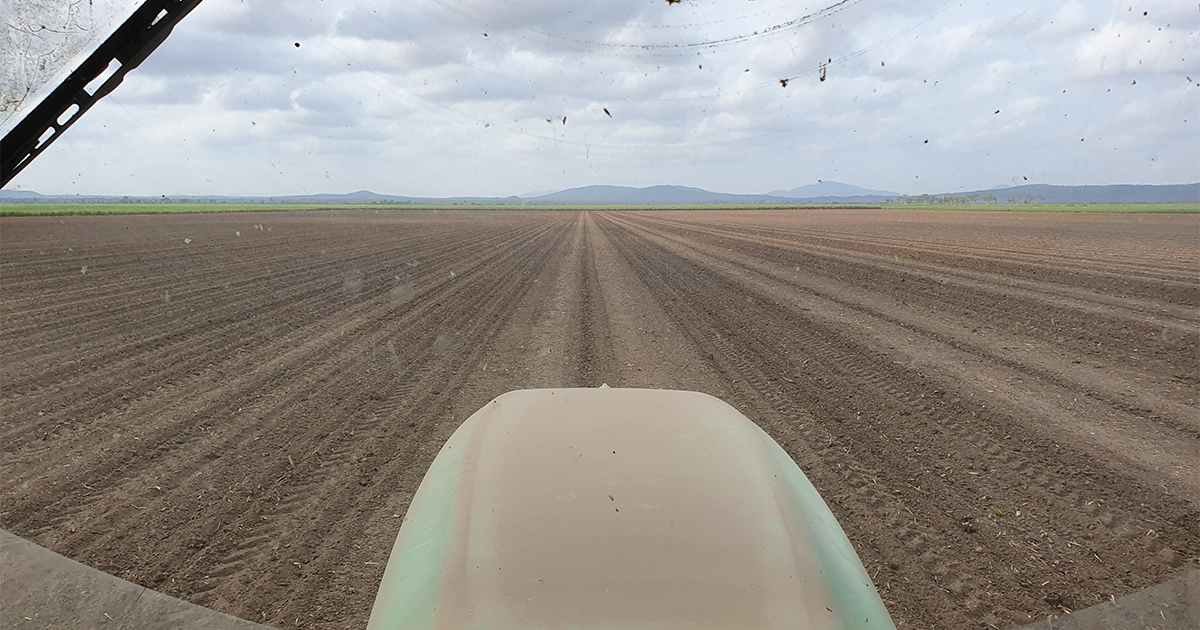 Applying fertiliser prior to planting
Applying fertiliser prior to planting
Planting
- Planted Kuranda soybean variety on 7 December.
- Soybean inoculant was mixed in an old cement mixer. This method has proved reliable as Richard has never had a failed inoculation.
- Planted rate was 320,000 seeds/ha, 600 mm row spacing on beds. The narrow spacing on the bed gives rapid canopy closure on the bed and leaves more room for tractor wheels in the interspace.
- Due to some operational issues the seed was planted a bit deep, which resulted in sub-standard strike on two of the three blocks. Richard replanted one of the blocks a week later. The second plant was at the correct depth of 30 mm and the strike was marginally better but still not fantastic.
- For the second planting, Richard just moved the seeders 50 mm sideways 50mm to plant alongside the first planting. The first beans planted seemun-affected, which was unexpected, so he now has two crops in the one block planted a week apart. It will be interesting to see how it yields compared with the single planting blocks.
- A number of growers have experienced poor strike in soybeans this year. The feeling is that irrigating the day after planting may not have adversely affected the seed in the hot conditions. For his next crop (in Dec 2020) Richard plans to pre-water, plant and then give the crop a week to germinate before applying the second irrigation.
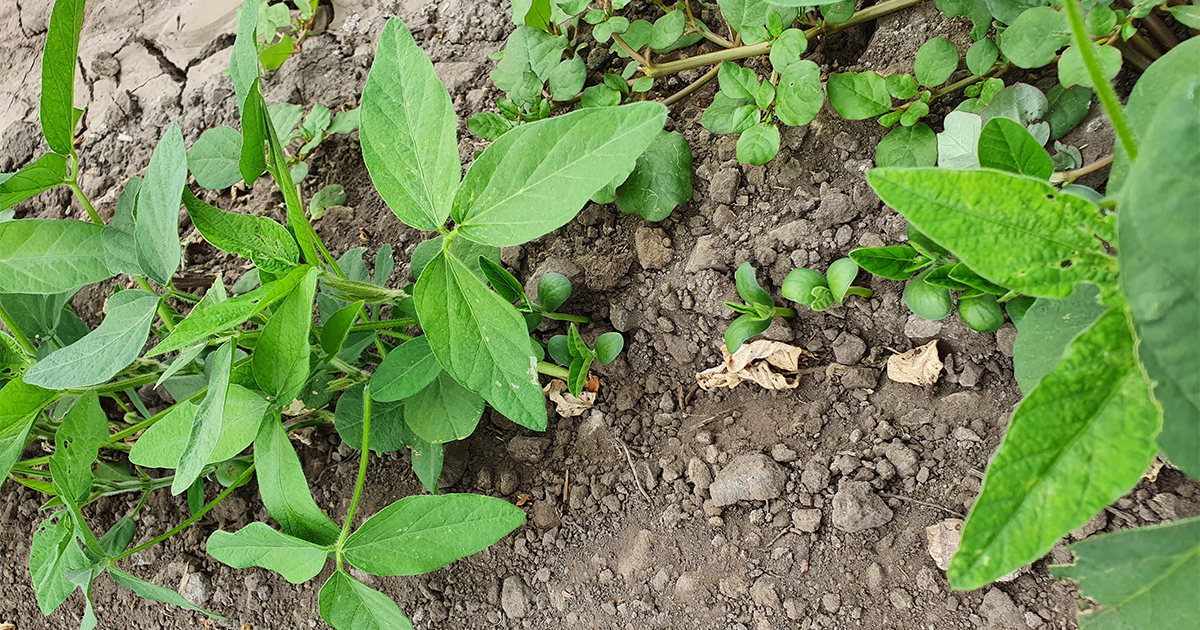 Second planting germinating alongside the first planting.
Second planting germinating alongside the first planting.
Irrigation
- The crop has been irrigated weekly. You cannot over irrigate beans here on sandy loams soils in summer.
Week 4
Management notes:
- 3 January applied spray for grubs and grasses.
- Following day Blazer was applied with one nozzle over the stool to clean up broadleaf in between the rows on top of the bed.
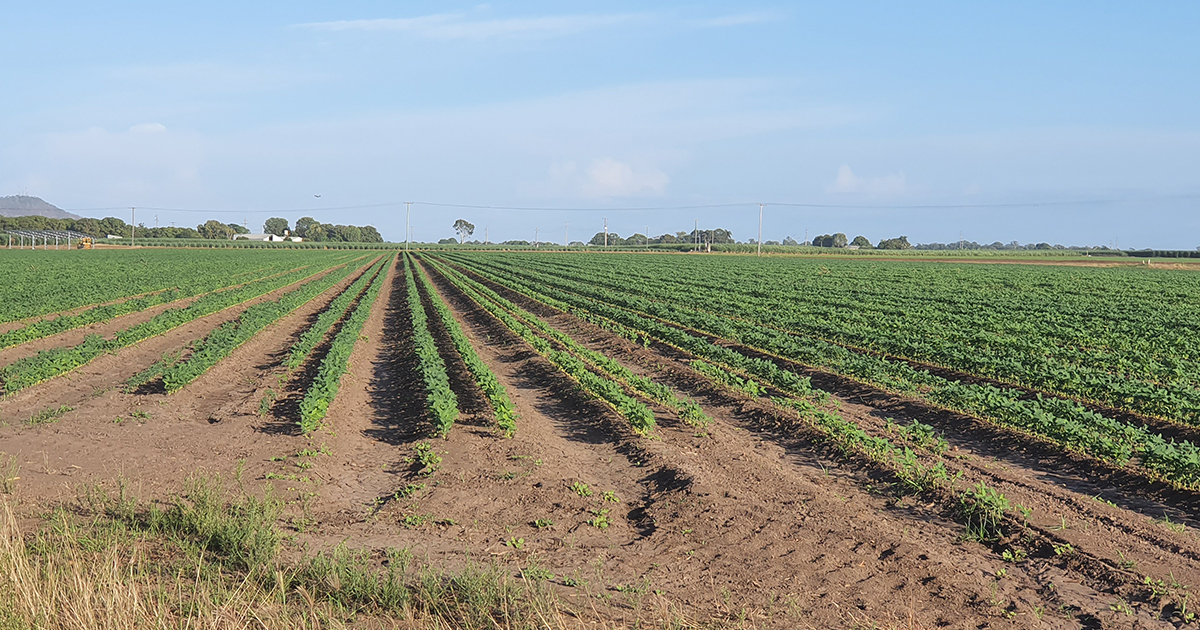 Row and bed configuration.
Row and bed configuration.
Week 5
Management notes:
- After irrigating this week, Roundup was applied in the furrows using a shielded sprayer.
- Two passes with the two different sprayers is still a lot cheaper than using Blazer across the whole block.
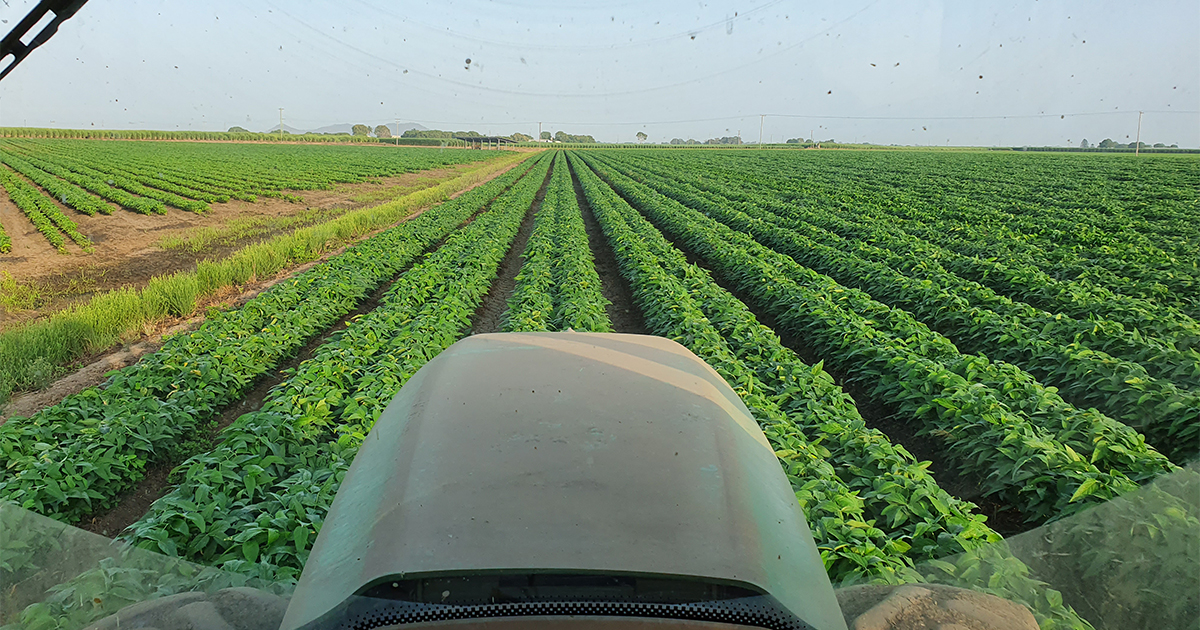 Shielded sprayer was used to apply Roundup to the furrows.
Shielded sprayer was used to apply Roundup to the furrows.
Week 6–11
Management notes:
- Started twice-weekly checks for bugs by Brent and the Landmark team.
- The crop survived a downpour of 500 mm in 48 hrs in late January.
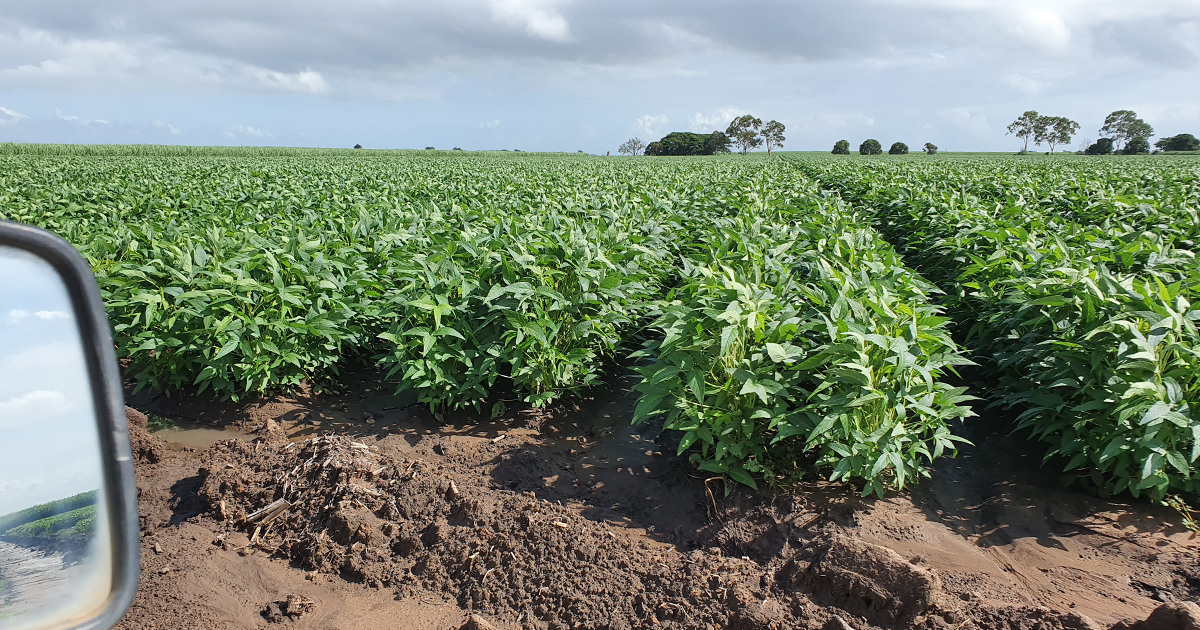 Day after the 500 mm rainfall event.
Day after the 500 mm rainfall event.
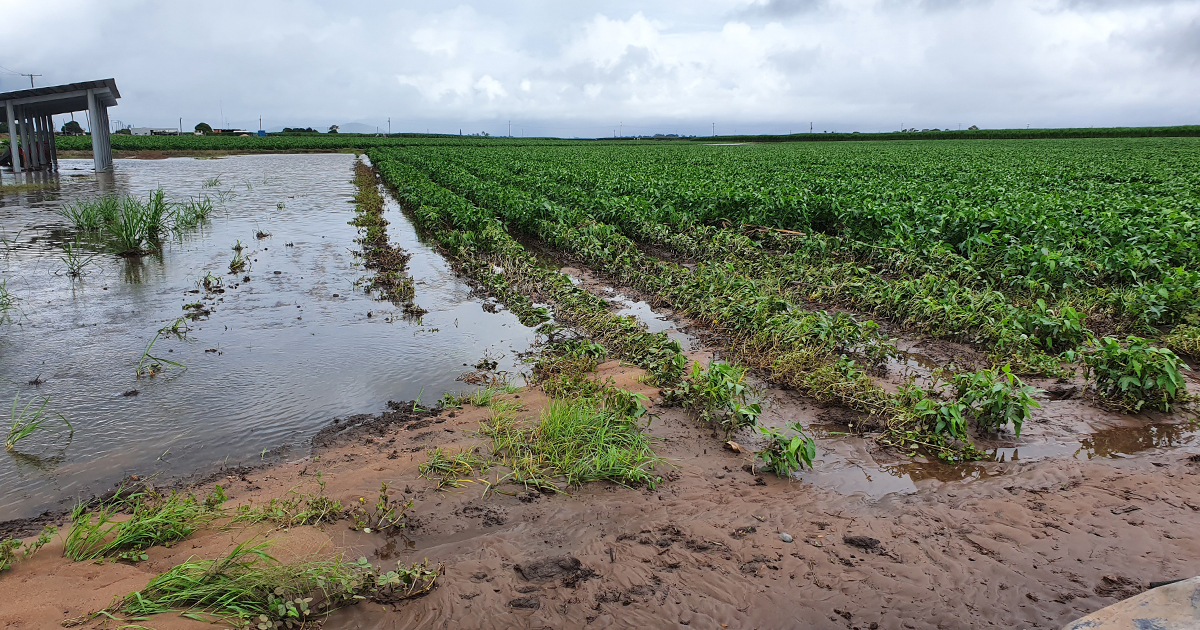 Just one corner was badly affected with inundation and waterlogging.
Just one corner was badly affected with inundation and waterlogging.
Week 12
Management notes:
- It is on the end of the flowering stage and the crop is making pods now.
- No need to spray for insect pests yet. Bad bugs are under threshold and there's plenty of good bugs, so timing of next spray is critical.
- The plants are starting to lodge due to more rain falling but Richard hopes the crop will stay upright.
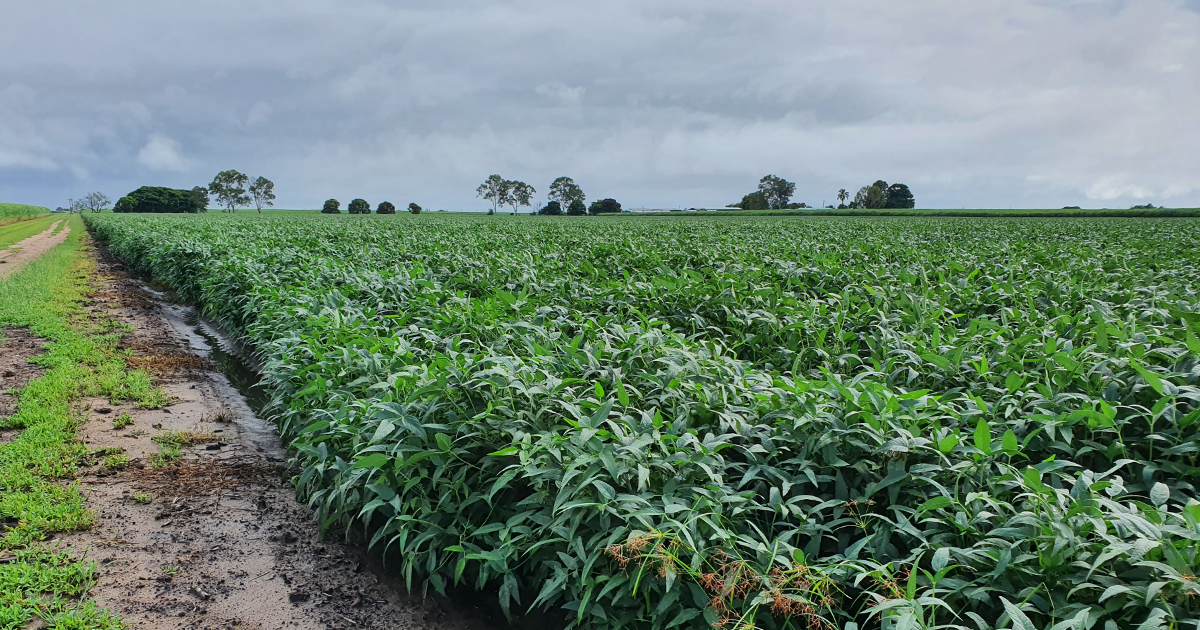 Signs of some lodging.
Signs of some lodging.
Week 13 (the week ending 7 March)
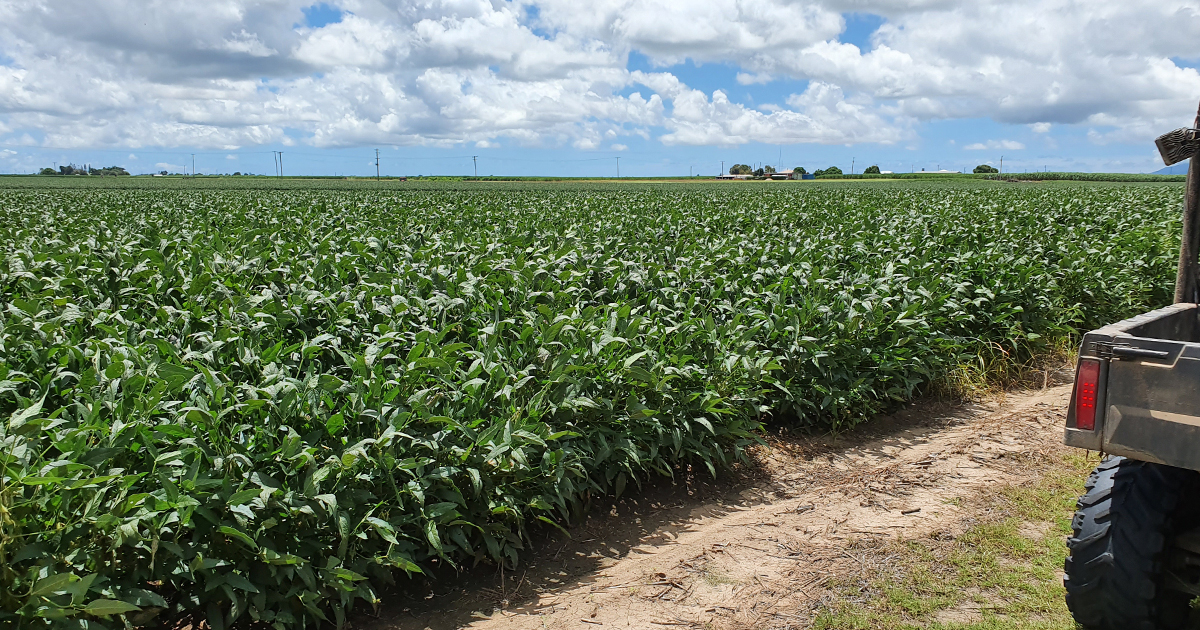
Management notes:
- 170 mm fell early last week. Of course, the day the rain finished the crop needed its first bug spray, so aerial application was the only option. Altacor and Shield were applied.
- Flowering is all but finished bar a few plants from the second replacement seeding.
- Crop is podding well.
- Resumed watering and hoping there's no strong wind next week that could cause the crop to lodge.
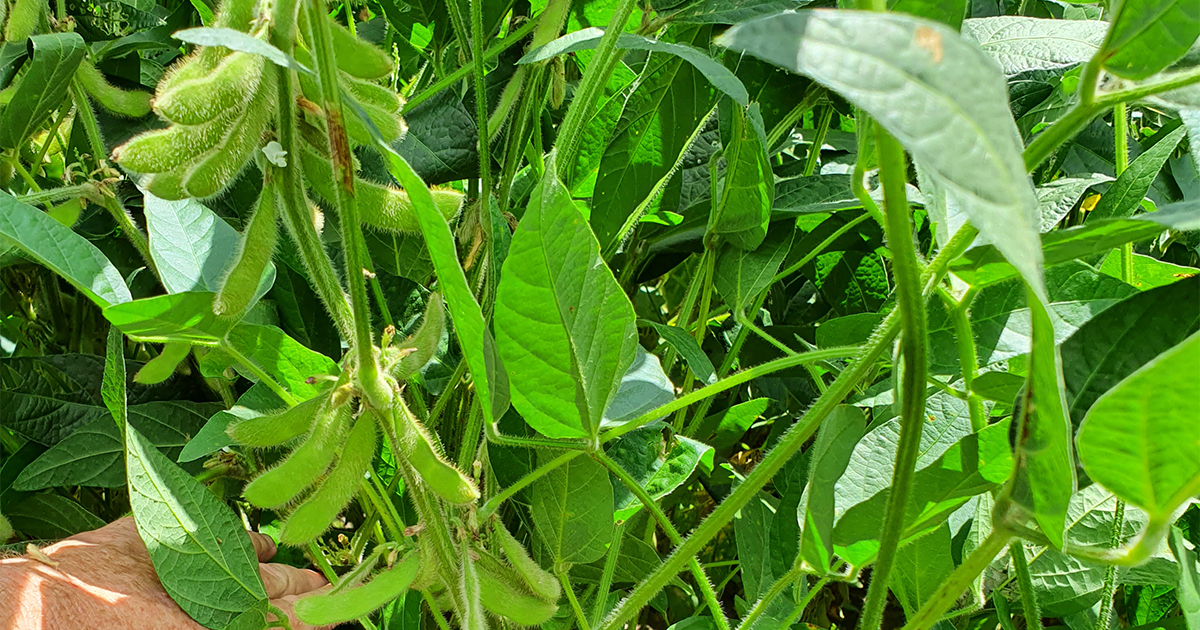 Podding well.
Podding well.
Week 14
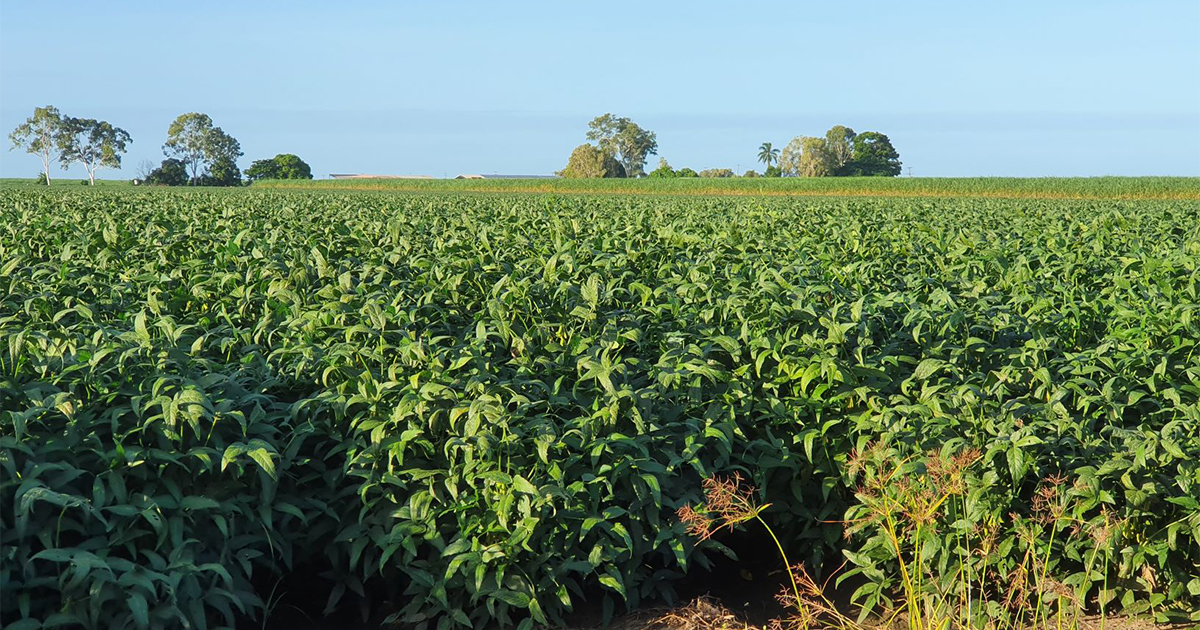
Management notes:
- Weekly irrigations continue – just over 4 ML/ha on average applied so far for the crop. There has also been 750 mm of in-crop rainfall.
- Pods are filling well. Harvest is estimated to be 4 to 5 weeks away.
- Fortunately the cyclone stayed away, but so did the rain. Only 10 mm total for the last 10 days fell at Richard's place although others in the area received more.
- The plants are getting very top heavy and the 20 to 30 knt winds this week haven't been great. The plants seem to have sprawled rather than fallen over. Crop lifters on the harvestor will be needed.
- Fall army worm has been found in the district and is relatively close 'as the moth flies' – just a few km south of Richard's farm. So far there have been none detected in soybeans.
- Nil spraying needed this week.
- Only pest of excitement is a couple of parrots that Richard has never seen before having a feed morning and night.
- Some random plants are standing way above the rest of the crop and loaded right to the tip with beans. Richard has not seen this before in other varieties.
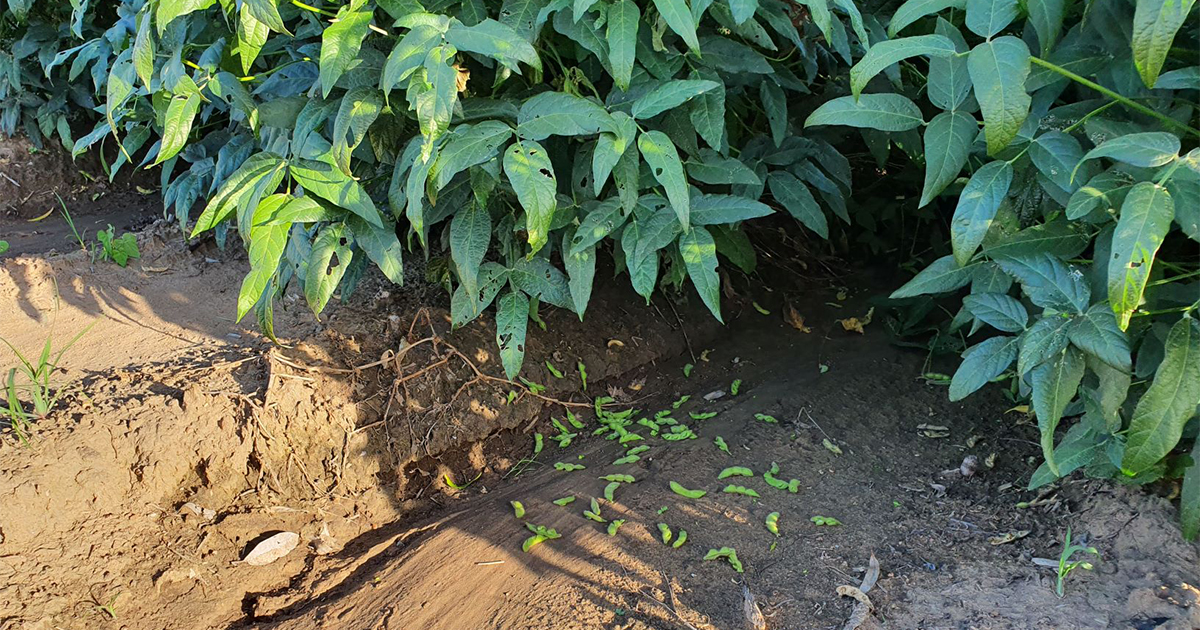 Damaged pods after parrots were seen feeding in the crop.
Damaged pods after parrots were seen feeding in the crop.
Week 16
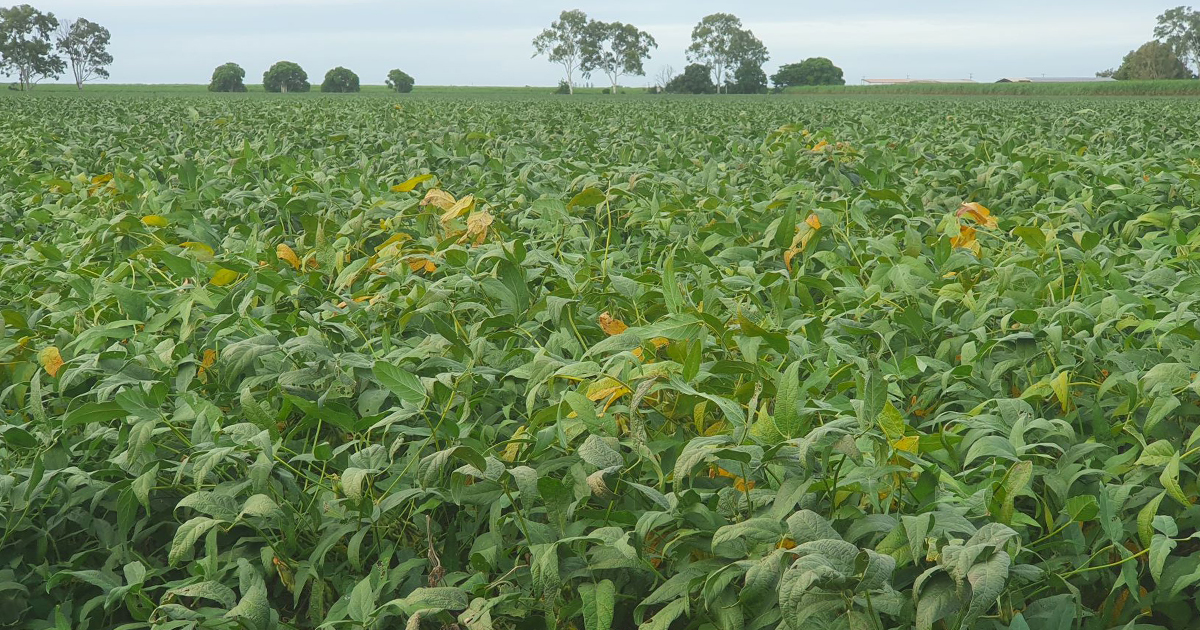
Management notes:
- Another irrigation this week. Looks like the wet season is done. Expect another watering or two to finish them off.
- Beans are starting to go off. Pods are filling well.
- There is a little bit of disease in some of the later pods due to the immense canopy not allowing the humidity out but it shouldn't affect the crop greatly.
- Bug checked twice this week. Some pod suckers starting to appear but under threshold so far. Richard expects to spray for them early next week as numbers increase.
- No sign of Fall Army Worm but it has been found now in other soy crops in the district.
- About 3 weeks left and they're done and dusted.
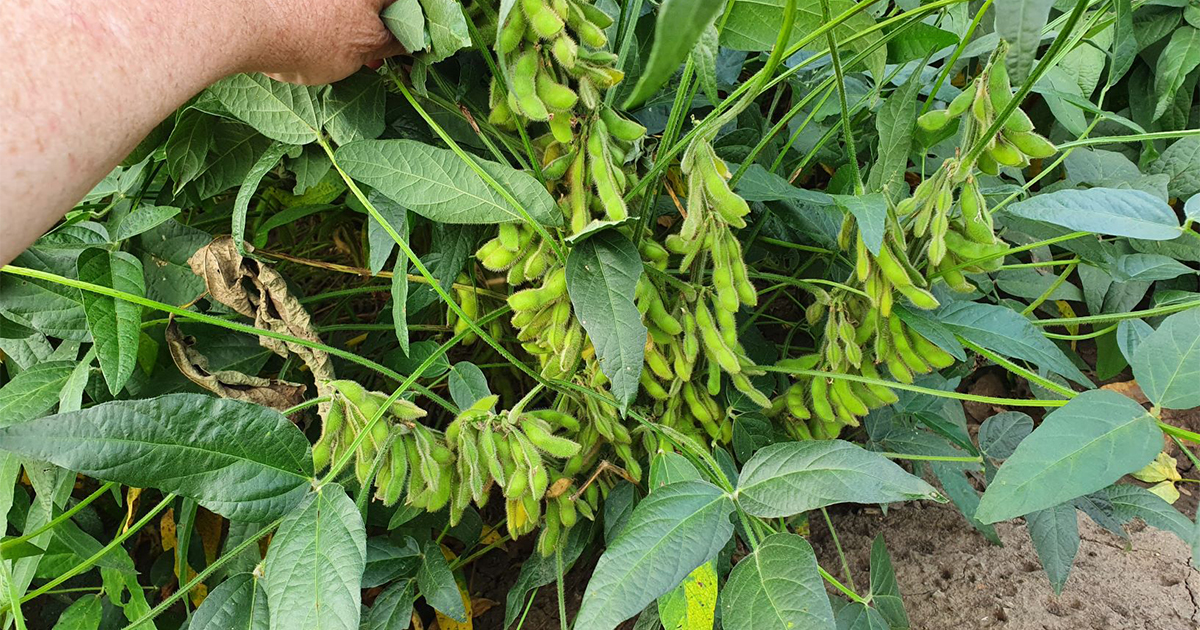
Weeks 17-18
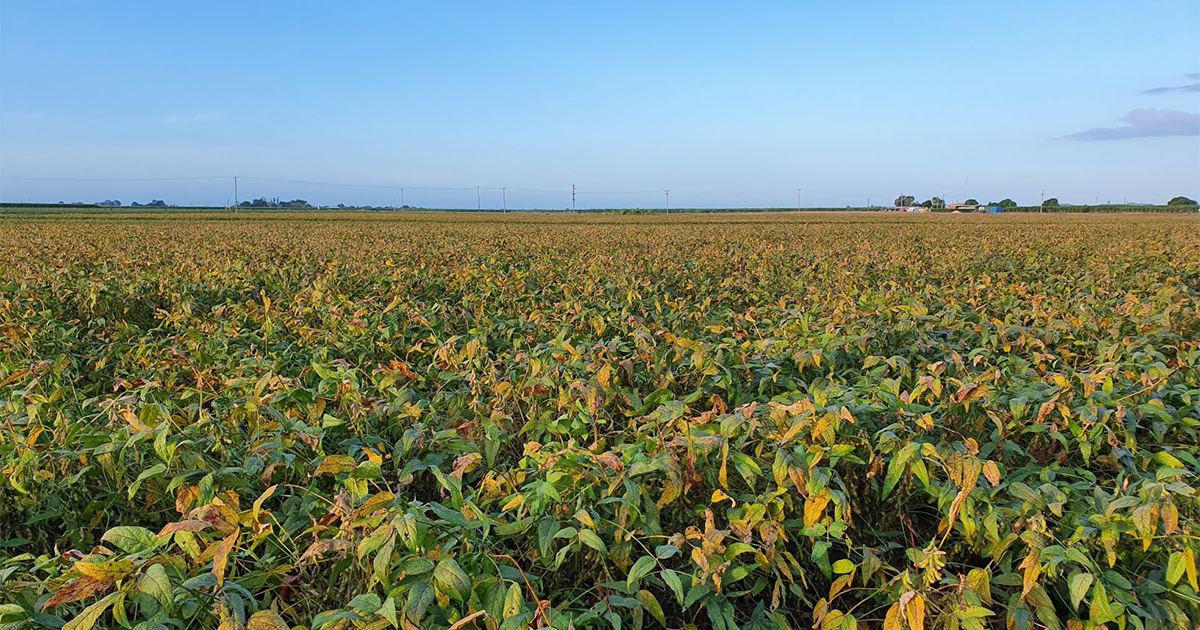
Management notes:
- Sprayed with Decis early in the fortnight as predicted due to the numbers of redbanded shield bug.
- The crop is going off nicely and fairly uniformed across the three blocks.
- It may have had its last irrigation due to 9 mm of rain a few days ago but another will be applied if necessary.
- Fungal disease Target spot has started to effect all the Kuranda beans, which is worrying as it may be problematic planting beans again in an 18 month rotation. It shouldn't affect these beans though since it is so late in the crop.
- Temperatures have cooled and the crop is still two to three weeks off harvest. They are dessicating themselves nicely so Richard is undecided whether to use glyphosate on the whole crop or spot spray with Reglone.
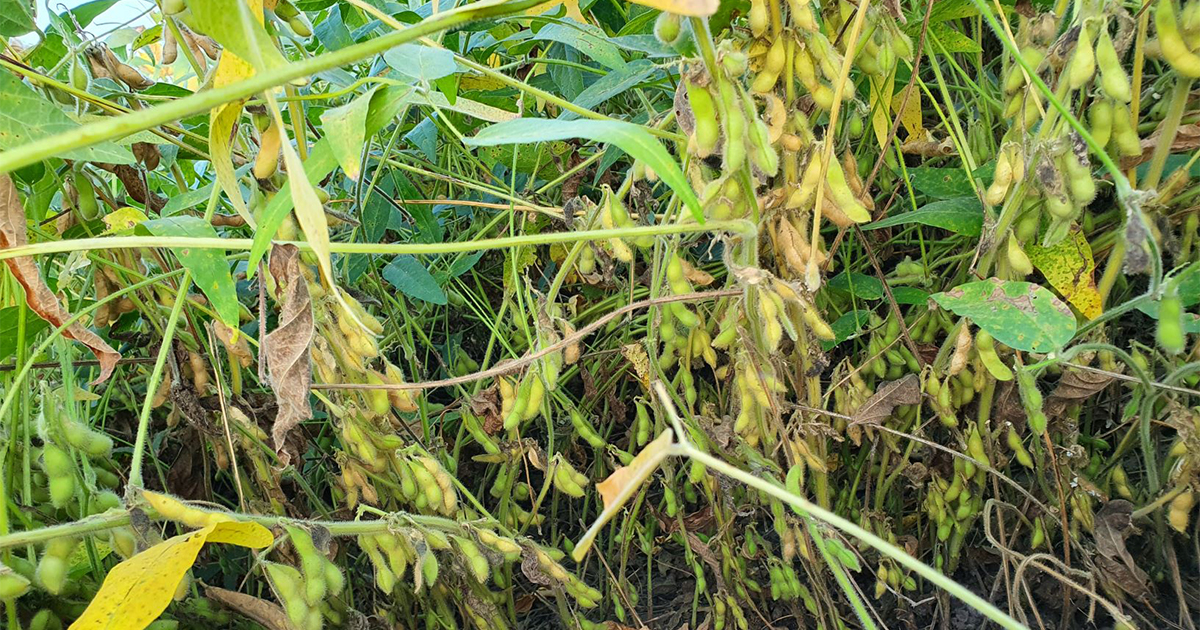 Loaded with maturing pods. Harvest is two to three weeks away.
Loaded with maturing pods. Harvest is two to three weeks away.
Week 19–20
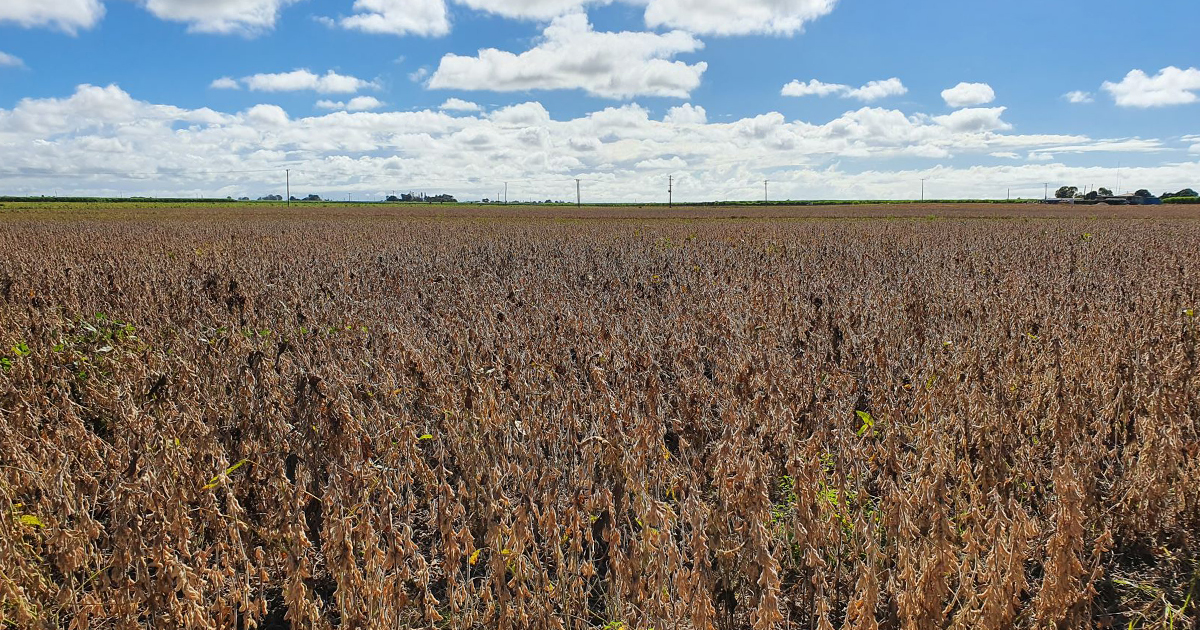
Management notes: After a final irrigation and bug check by Richard's three furry moisture monitors, he picked up the irrigation fluming and watched the crop to decide whether to desiccate or not. In the end no desiccation was required. The crop dropped most of the leaf naturally and grain moisture started to drop.
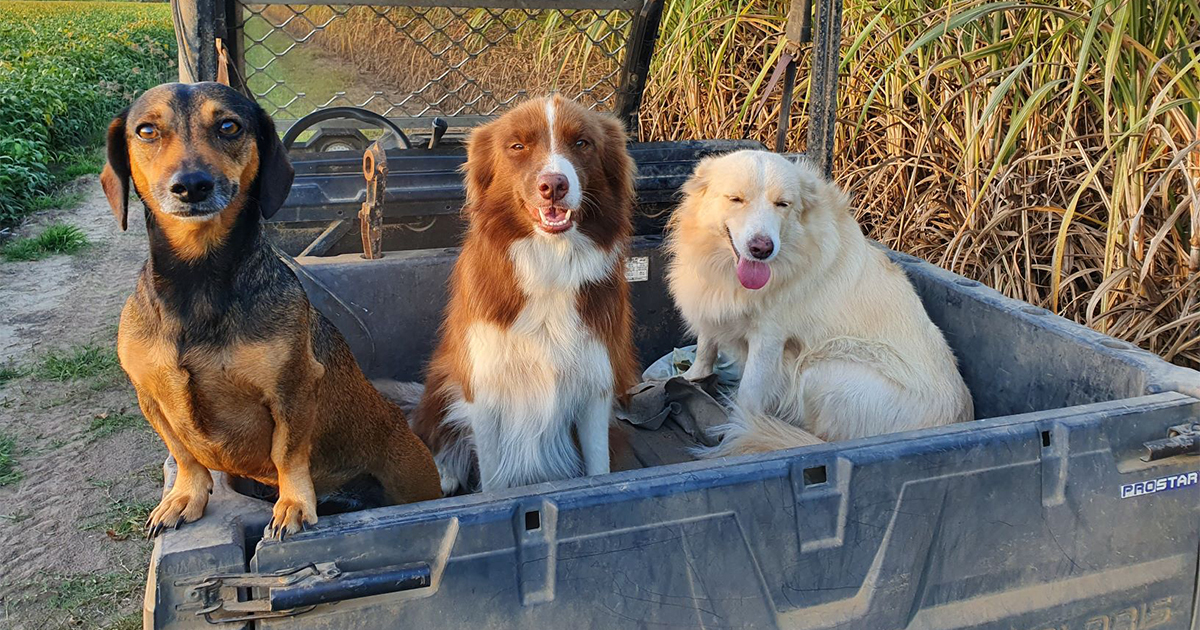 Farm workers are pretty pleased after final irrigation and bug checking.
Farm workers are pretty pleased after final irrigation and bug checking.
The farm narrowly missed a random storm, receiving just 3 mm while farms nearby got as much as 114 mm. With other crops too wet to harvest, the harvester immediately became available so once the grain got close to 12% the crop was harvested on 23 and 24 April, with 136 days (19.4 weeks) from plant to harvest.
Yields have been disappointing at 81.4 t harvested off 22 ha, giving an average of 3.7 t/ha. District crops of Hayman and Kuranda have yielded similarly and Richard expects his crops to also be similar.
Final water usage for the three blocks was 5.01, 7.5 and 4.5 ML/ha with around 700 mm of rain thrown in too.
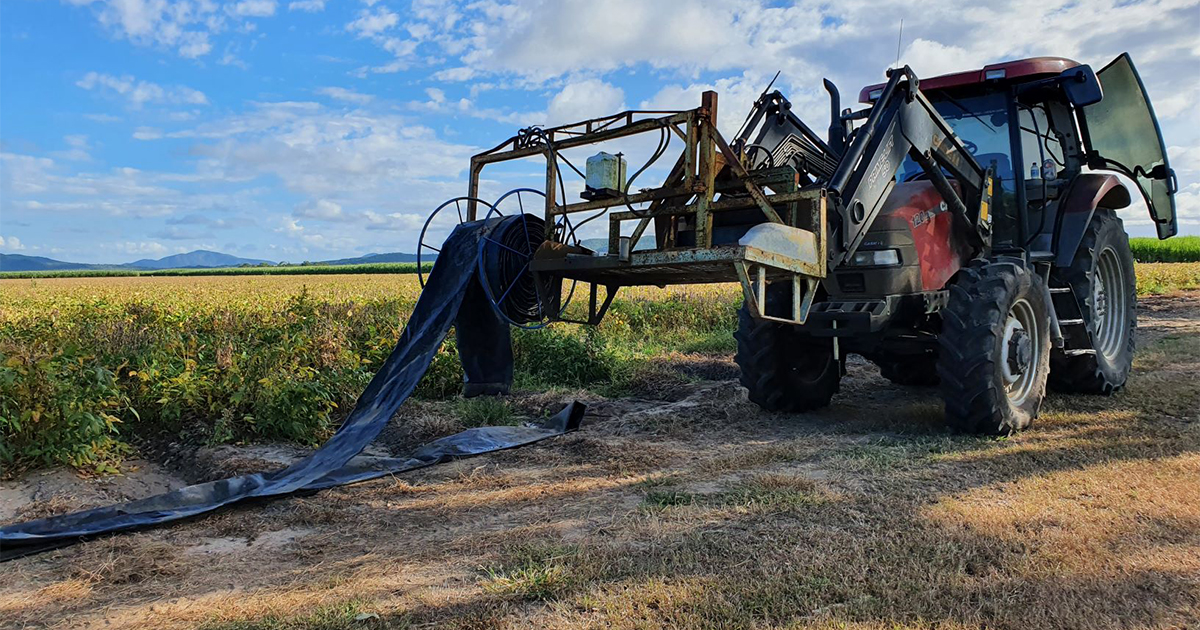 Picking up the fluming after the last irrigation.
Picking up the fluming after the last irrigation.
After harvest
Richard is steadily moving toward implementing an 18 month fallow between cane crops. In the monitored block he is planting 14 ha back into cane with the other 8 ha going into corn preferably. Corn contracts are hard to find though so Richard is also looking at the possibility of sunflowers, sorghum or other prospects.
In preparing the ground for cane, the video above shows the ease it can be done and the conditions of the soil after a bean crop. Two passes with the wavy discs through the bean beds and the cane planter can plant.
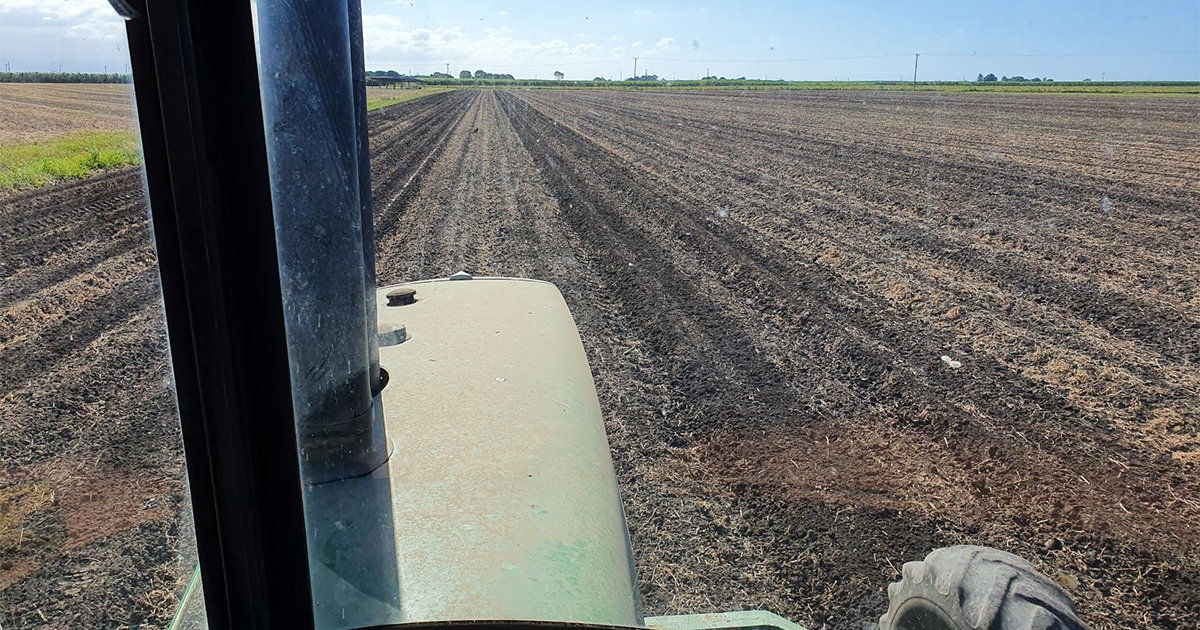 Land preparation for cane – two passes with the zonal tillage machine. Soybeans leave the soil in excellent condition and easy to work.
Land preparation for cane – two passes with the zonal tillage machine. Soybeans leave the soil in excellent condition and easy to work.
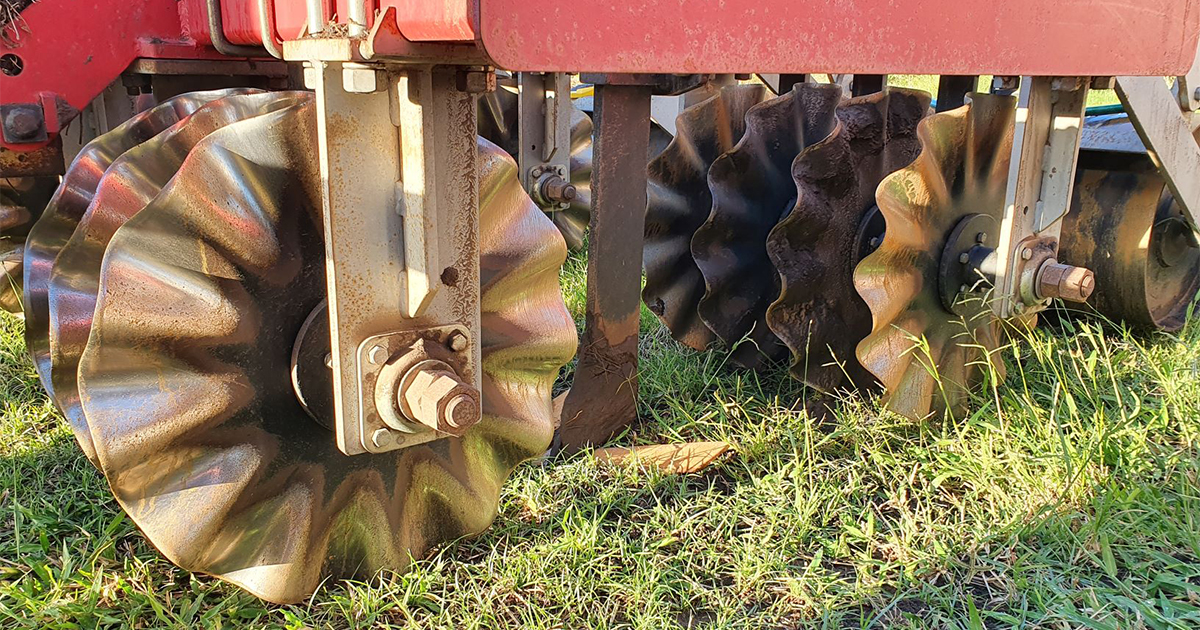 Richard's wavy disc zonal tillage machine just works the cane beds in his controlled traffic system.
Richard's wavy disc zonal tillage machine just works the cane beds in his controlled traffic system.
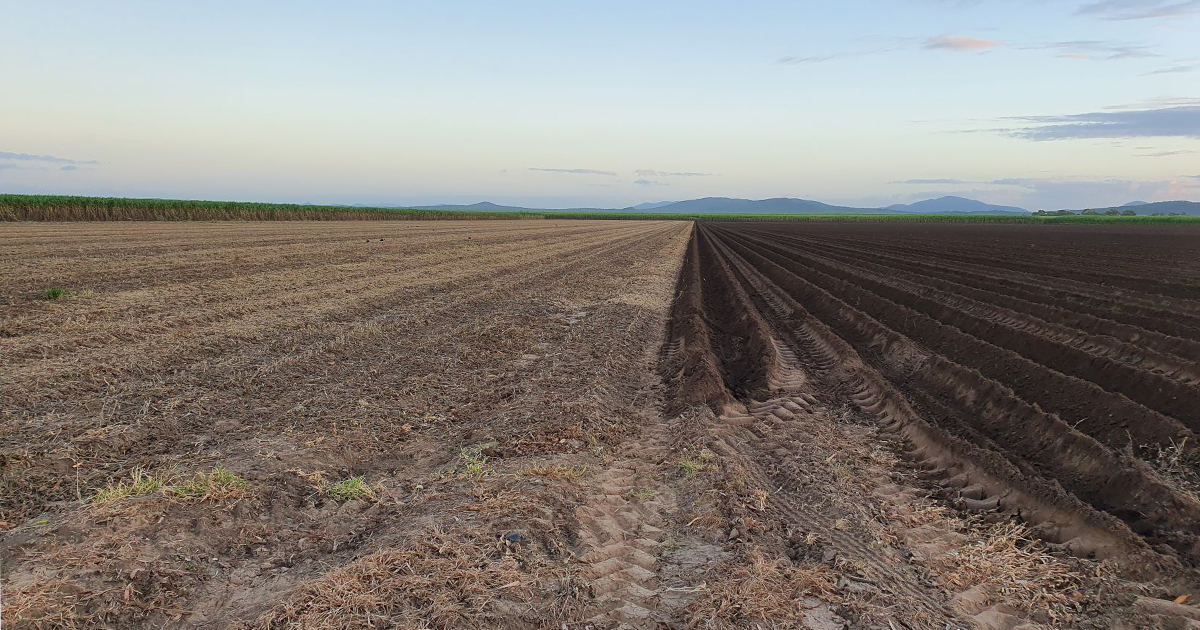 Cane planted.
Cane planted.
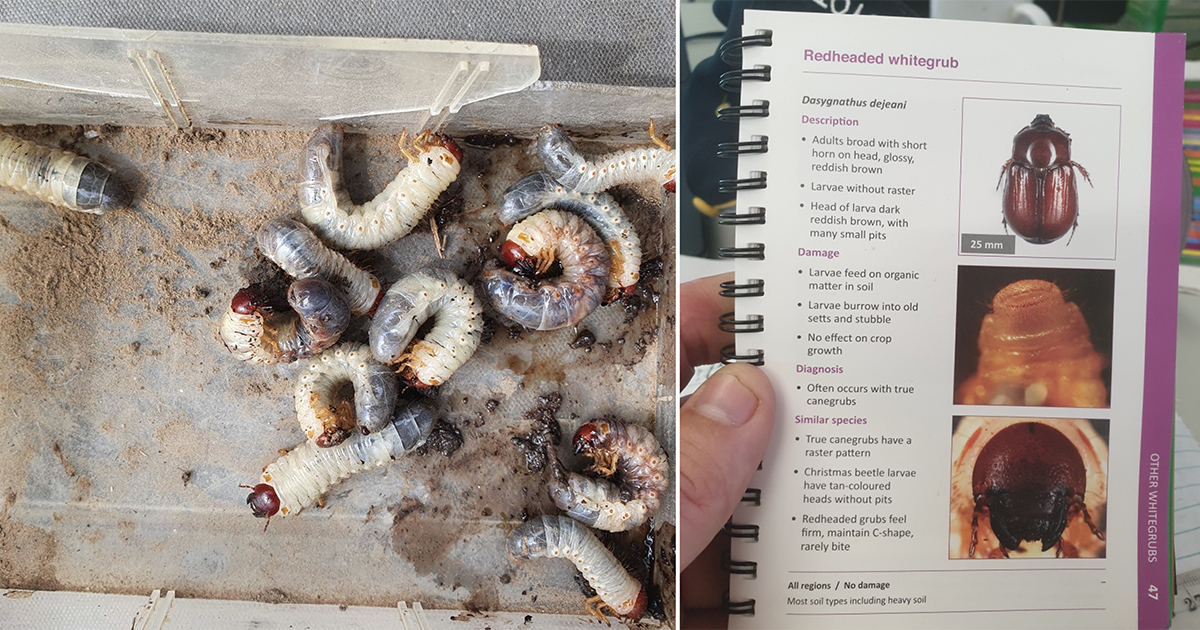
One thing Richard noticed that he'd never seen before was the grub population. The planter's plough brought thousands of grubs to the surface. After a couple of days of research from the experts it was decided that they were Redheaded White grubs. Doesn't seem they were or will be a problem.
Read Pulse Check blog articles | Pulse Check Coastal facebook | Subscribe to the monthly newsletter

